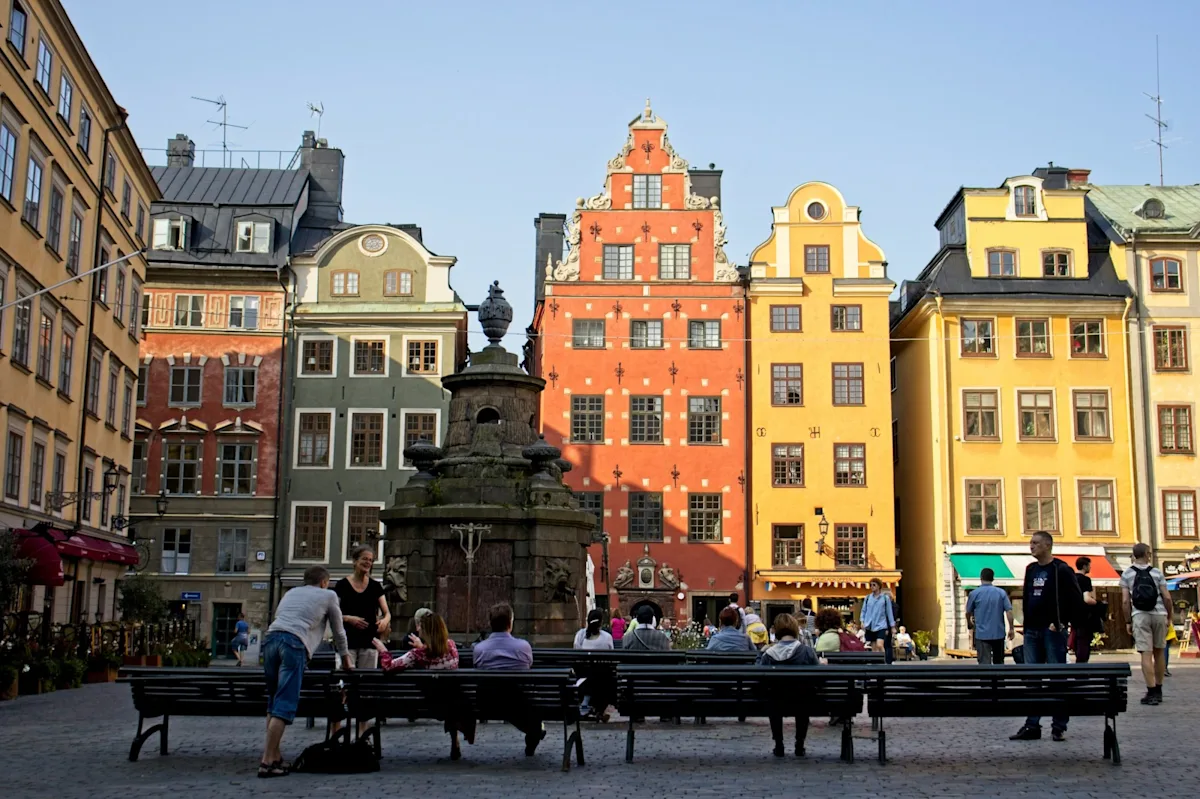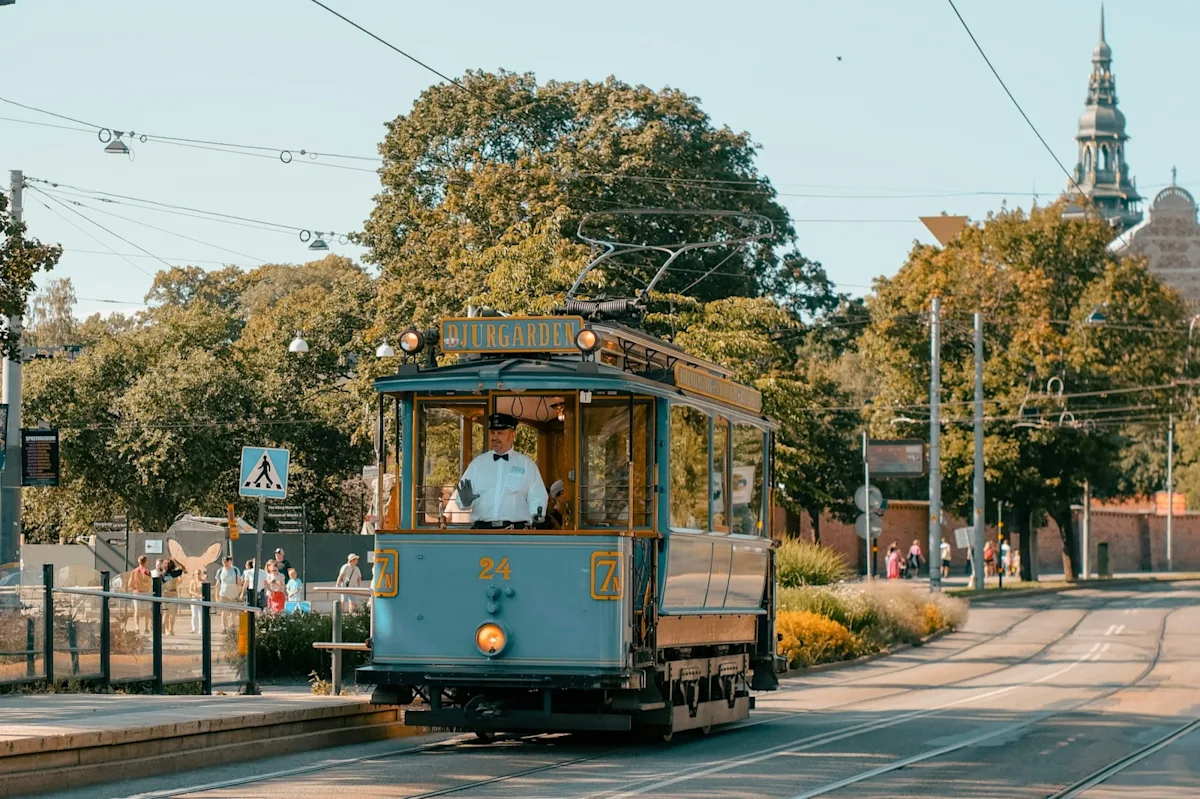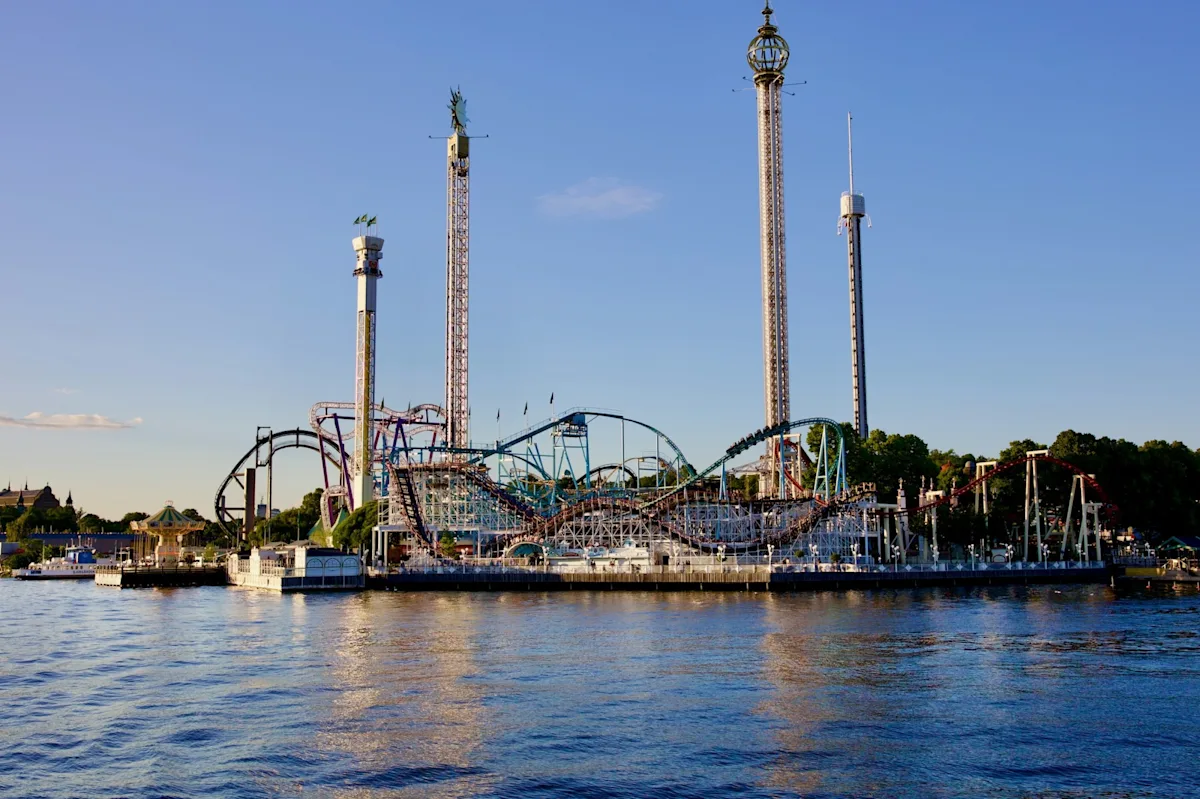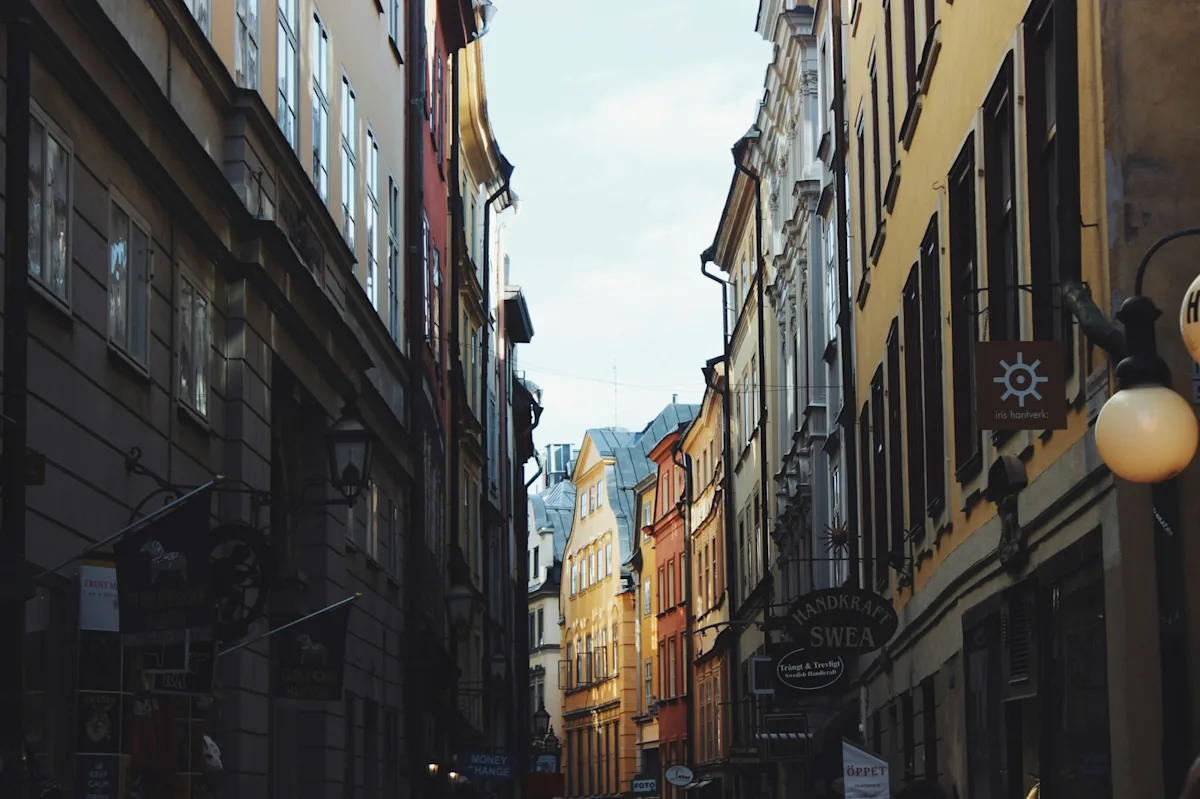
Sweden’s capital is a captivating city spread across 14 islands. There’s a unique mix of medieval history, innovative Nordic design and a stunning waterfront setting. With the historic old town of Gamla Stan to trendy neighborhoods like SoFo, Stockholm enchants. Below, we highlight the top things to do in Stockholm, all recommended by Fora travel advisors who have explored the city firsthand.
For expert help crafting your Stockholm itinerary, plan your trip with a Fora Advisor. In addition to providing insider tips, pointing out hidden gems and arranging things like guided tours, your advisor can book Stockholm hotels. If you choose one of our partner properties, they’ll unlock exclusive perks and benefits, too.
Fora Advisors traveled to Stockholm as part of a tour of the Nordic region
Stockholm was the second stop on a nine-day familiarization (FAM) trip to Norway, Sweden and Finland in September, 2024. Scouting the best hotels in three major cities was the primary mission. But our team of Fora Advisors also got to experience some of the best things to do in Stockholm in between site inspections.
“Stockholm’s a colorful city with loads going on for all ages and much to explore,” Fora Advisor Christie Sweaney said, adding that the people are warm and friendly.
The Stockholm itinerary below is based on the FAM team’s experiences (and also includes a few recommendations from advisors who had previously visited the region).
Related article: Definitive Guide: Nordic Region
Day 1: Gamla Stan
Our advisor team arrived in Stockholm after a few days in Oslo. Arriving late at night, they enjoyed a relaxing evening at Grand Hôtel, one of our favorite hotels in Stockholm, before splitting their first day between the city’s historic Old Town and Djurgården Island.
Explore the historic Old Town (and enjoy a fika)

Gamla Stan is a window into medieval Sweden. In fact, it’s one of the best-preserved medieval city centers in Europe. The neighborhood is home to iconic landmarks such as the Royal Palace and Storkyrkan (Stockholm Cathedral), as well as quaint cafés, artisan shops and galleries. Stortorget, the main square, is a must-visit for its architectural surroundings and history (it was the site of the infamous Stockholm Bloodbath). You can also explore underground vaults and museums, such as the Nobel Prize Museum.
Per Fora Advisor Kristen Kolek, the cafés in Gamla Stan put heaters and blankets out in winter, so there’s never a bad time to explore the area. She also noted the contrast between contemporary Stockholm and the Old Town is striking. It feels “like stepping out of a city entirely,” she said.
Gamla Stan is also an idyllic place to take part in Sweden’s fika tradition, where you hit the breaks and sip coffee, enjoy pastries and hang out with friends.
Vasa Museum
Exploring the Vasa Museum on Djurgården Island is one of the most iconic things to do in Stockholm. It’s the only place in the world that houses a fully intact 17th-century ship, The Vasa, a huge warship that sank on its maiden voyage in 1628. It was salvaged from Stockholm Harbor in the 1960s and was turned into a museum soon after. Marvel at the ship’s intricate carvings, learn about its tragic history and explore related exhibits detailing life aboard vessels in the 1600s.
“The Vasa takes your breath away when you first enter the museum,” Fora Advisor Christie Sweaney said.
The museum also offers fascinating insights into the Vasa’s restoration process, showcasing how the ship was preserved despite spending more than three centuries underwater.
“It’s a perfect place to spend the morning with your children,” Fora Advisor Daniela Chavez Molina added, “plus it’s very close to the Viking Museum, so you can combine both and get a real sense of Nordic history.”
Day 2: More Djurgården Island and the SoFo District

Day two of our advisor’s Stockholm itinerary was similarly busy. Our advisors returned to Djurgården Island to spend time at the Skansen Open Air Museum, Stockholm’s oldest greenspace, before switching gears and spending the rest of their day in Södermalm’s trendy and urban SoFo district.
Skansen Open Air Museum
Skansen is the world’s oldest open-air museum. The site features over 100 historical buildings brought from various parts of Sweden, and exhibits traditional Swedish life from different eras. You can explore old farmhouses, workshops and even a fully recreated 19th-century town, with knowledgeable staff dressed in period costumes. There’s also a zoo that focuses on Nordic wildlife, including bears, moose and lynx.
SoFo District
The SoFo District (South of Folkungagatan) in Södermalm is one of Stockholm’s trendiest and most creative neighborhoods. It has a vibrant arts scene, eclectic boutiques and a variety of laid-back cafés. SoFo is a haven for design lovers, with tons of indie shops selling everything from vintage clothing to unique Scandinavian home décor. It’s also a hotspot for foodies, with hip restaurants, bars and coffee shops offering everything from traditional Swedish dishes to international cuisine. Go to SoFo to experience Stockholm’s modern, creative side; it pairs well with Skansen and Gamla Stan.
Day 3: Explore Stockholm’s waterways on a canal tour
Our advisors spent their last day in Stockholm on the water. The city is divided by a series of canals, and boat tours will take you to spots across the islands. The team had a standout experience on the island of Vaxholm.
Upon returning from their tour, our advisors hopped on another boat, this time on the Viking Line to Turku, Finland, thus ending their time in Stockholm. For help planning your own Nordic tour, chat with a Fora Advisor. They can point you in the right direction and book all your accommodations at stops along the way.
Boat tour of the Stockholm Archipelago

Exploring the archipelago will top many’s lists of things to do in Stockholm. Experiencing the city from the water offers a completely different perspective, showcasing how locals have built their city and way of life around the water. You’ll glide through calm waters, passing by picturesque fishing villages, lush forests and dramatic rock formations. Many tours stop at islands like Vaxholm or Sandhamn, where you can immerse yourself in local culture, hike or enjoy a meal by the waterfront.
Cinnamon bun baking class at Vaxholms Bed & Breakfast
Vaxholms Bed & Breakfast is a small property on its namesake island.
“A cruise to see the archipelago: unforgettable,” Fora Advisor Sam Growdon said. She added that arriving at the property to make cinnamon buns is “implanted in my memory forever!”
The kanelbulle (cinnamon bun) is a beloved staple in Sweden’s culinary tradition. Learning to bake this iconic treat not only gives you insight into Swedish baking techniques, but also connects you with the cherished tradition of fika. Participating in the baking class was universally loved by our advisors; you get to create your own kanelbulle from scratch, savor the (delicious) results and take part in an authentic cultural activity. Fora Advisor Stephanie Morgan described it as a “quintessential Swedish experience.”
If you’re not interested in making cinnamon buns, Fora Advisor Daniela Chavez Molina recommends the pizza making class at Vaxholms Bed & Breakfast. She also noted that the attached restaurant prepares excellent picnics to take with you on an island hike.
More things to do in Stockholm, Sweden
Our advisors only had three days to visit Stockholm, but they did have additional recommendations based on prior trips. Here are a few more things to do in Stockholm to round out your itinerary.
Djurgården Island: Gröna Lund, ABBA Museum

Djurgården Island has more to offer than the Vasa Museum and Skansen. There’s also the interactive ABBA Museum, dedicated to the Swedish pop group. The Royal Djurgården offers a quiet escape into nature, while also hosting a variety of cultural events year round.
“Djurgården Island is the perfect place for families, with its overflowing list of kid-friendly excursions,” Fora Advisor Stephanie Morgan said.
Gröna Lund is an amusement park featuring 30 roller coasters and rides, restaurants, food stalls, live shows and other attractions. The western portion of the island is appropriately referred to as Museum Row.
“The accessibility of the museums, the quality of the art on show, and the beauty of the architecture of the galleries was fantastic,” Fora Advisor Sam Growdon added, while also noting that despite the quality of museums, crowds are sparse. “Why would you queue in Paris, London and NYC and fight your way to see art with the crowds when you can meander and enjoy at your own pace without scores of people?”
Related guide: Family Fun in Stockholm, Sweden
Södermalm (Beyond SoFo)
If you’re short on time, sticking to SoFo in the wider Södermalm neighborhood makes sense. Otherwise, exploring the rest of Södermalm reveals even more of Stockholm’s bohemian spirit. The district is known for its creative vibe, with art galleries, independent boutiques and cozy cafés scattered throughout. Walk along the Monteliusvägen pathway for views of the city skyline and waterfront, or head to the local hangout, Tantolunden Park.
Sweden’s Royal Palace

The Royal Palace is one of the largest palaces in Europe and serves as the official residence of the Swedish royal family. Tour the stately Royal Apartments, the Treasury and the Gustav III Museum of Antiquities. The Changing of the Guard ceremony is also a popular sight, drawing crowds to the palace courtyard.
Fotografiska Museum
Fotografiska hosts contemporary photography exhibits from around the world, all housed in a striking industrial building by the Södermalm’s waterfront. Topics range from fashion and nature to engineering. The museum also has two award-winning restaurants — The Restaurant and The Bistro — that emphasize sustainable dining and contemporary Swedish gastronomy.
Insider tips for exploring Stockholm
Beyond recommending things to do in Stockholm, Fora’s FAM team shared a few pro tips.
Stockholm is great for traveling families
Stockholm — and the Nordic region in general — is an underrated destination for family travel. Fora Advisor Sam Growdon noted how the city doesn’t feel chaotic. It’s clean and less crowded than many other European cities. In that vein, Stockholm has a child-friendly, slower pace. Transportation is also efficient and convenient.
The Viking Line is a fun way to travel between Sweden and Finland
Navigating between the Nordic countries is surprisingly easy despite their size and the distances between major cities. The region’s roads are safe and reliable if you want to rent a car, but trains, buses and flights efficiently connect all three countries. Fora Advisor Kristen Kolek recommended taking the Viking Line between Sweden and Finland (there are options connecting all three countries, too). The views are stunning, and there’s a relaxing aspect to traveling between urban hubs — much like the Vikings and early Scandinavians.
Stockholm’s shopping scene is excellent

Fora Advisor Daniela Chavez Molina waxed poetic about the shopping in the Nordics, noting that within Europe, many visit specifically in search of fashion and design. “When in Stockholm you cannot miss visiting some local staples like Acne, Toteme and Malina,” she said, “but my suggestion would be to just walk around and be surprised with new discoveries.”
Enjoy tailored recs for things to do in Stockholm when you plan with a Fora Advisor
You can spend much more than three days in Stockholm; the city is filled with excitement, relaxation and culture. For tailored recommendations on things to do in Stockholm, places to stay and general travel expertise, connect with a Fora Advisor. They’ll handle the hassles of travel planning and booking to help you get the most out of your trip.
Things to do in Stockholm: FAQs
Read on for answers to questions about things to do in Stockholm and related travel topics.
What’s Stockholm famous for?
Stockholm is renowned for its juxtaposition of its well-preserved medieval center, Gamla Stan, and sleek, minimalist architecture with stylish interiors. The city’s waterfront location and 14 scenic islands make it a stunning destination for outdoor enthusiasts, with plenty of opportunities for boating, island hopping and exploring nature just beyond the city center. Stockholm is also recognized for being a paragon of sustainability and urban development.
Related guide: First Timers Perfect Guide to Stockholm
Can you see the Northern Lights in Stockholm?
Stockholm is too far south to regularly see the Northern Lights. But it is possible to catch a glimpse of them on rare occasions. Northern Sweden offers more frequent opportunities to see the Northern Lights.
When’s the best time to visit Stockholm for a variety of things to do?

Summer is the best time to visit if you’re looking for the widest variety of things to do in Stockholm, according to Fora Advisor Kristen Kolek. The weather is mild and there are plenty of daylight hours. Summer also offers the chance to explore the archipelago. Spring and fall provide a quieter experience with fewer crowds, but the weather can be unpredictable.
How many days do you need to see Stockholm?
Three to four days in Stockholm affords you time to explore major attractions like Gamla Stan, the Vasa Museum and Djurgården, and also take a boat trip through the archipelago. If you want to dive deeper into Stockholm’s neighborhoods or have time for day trips, a longer stay may be ideal.
Related guide: Fora Advisor Sara Graham-Baldi's Guide to a Weekend Getaway in Stockholm
Is Stockholm walkable? What’s the best way to get around?
Stockholm is very walkable, especially in areas like Gamla Stan and Södermalm, where many attractions, cafés and shops are close together. Public transportation in Stockholm (and the Nordics, in general) is also excellent, with a reliable metro system (Tunnelbana), buses and ferries connecting the city. Biking is another popular option for getting around Stockholm, and rentals are widely available.
What food is Stockholm is known for?
Unique takes on traditional dishes such as Swedish meatballs (köttbullar), often served with lingonberry sauce and mashed potatoes; herring; smörgåsbord (a buffet of cold dishes) and gravlax (cured salmon) are all widely available in Stockholm. The city also has a strong coffee culture. Fika — a coffee break with pastries — is a beloved Swedish tradition.
Is Stockholm expensive to visit?
Compared to Western Europe and the Mediterranean, many hotels in the Nordic region offer more approachable rates for similar accommodations. Otherwise, Stockholm is comparable to other major cities in Europe.
More Europe travel inspiration
Enjoy more European travel inspiration below:
